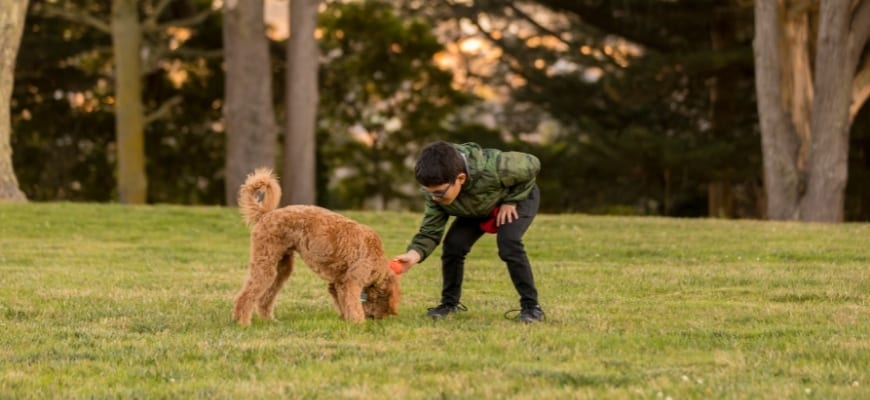Are you a new dog owner? Congratulations! You’ve just added a furry little bundle of joy to your life. But with that joy comes some responsibility. Dog training is one of the most important things you’ll need to do as a new dog owner. Dogs need structure and discipline in their lives, just like we do. They also need to know what is expected and what behaviors are unacceptable. That’s where dog training comes in.
Dog Training 101 – Commands, Steps, Do’s & Don’ts
Basic Dog Training Commands

There are quite a few ways you can teach your dog new tricks. There are playful, advanced, and basic tricks your dog will pick up through ample time given consistent responses or adaptive learning. There are training clubs where you can hire a trainer with a training package or bundle training classes for you al la carte.
Ensure you avoid trainers using any aversive training methods, such as electric training collars. You want the training program they enter to be one where their body language is listened to, and you, as a pet parent, are comfortable with the methods and training.
Here are some of the most essential commands that you should teach your furry friend:
- Sit: This is an excellent command to get your dog’s attention and a building block for other commands. You’ll want to say “sit” while gently pulling up on your dog’s leash and pushing down on his hindquarters. Once he’s in position, give him praise and a treat. Do not yank on the leash to get them to raise their head. This will only cause trauma and harm to your dog.
- Stay: This is an important command for keeping your dog safe. To teach him to stay, start with him in a sitting or standing position. Put your hand up in front of his face and say “stay.” If he breaks the position, gently guide him back into place with your hand and say “stay” again. As he gets better at following the command, you can move away from him—be sure not to move too quickly or too far at first.
- Come: You may never need to use this command if your dog is always by your side, but it’s still good to know just in case he ever gets loose. To teach him to come when called, start by putting a collar and leash on him and then kneeling down so that you’re at his level. Back up a few steps while holding onto the leash slack, then call him by name while saying “come.” Give him lots of praise and a treat if he comes towards you. Continue practicing this command until he comes consistently without being pulled by the leash.
- Down: The down command is like the stay command, except that your dog will need to lie down on his stomach instead of remaining in a sitting or standing position. To teach him this command, start with him in a sitting position, then say “down” while luring them with the treat. Once he’s lying down, give him plenty of praise and a treat.
- Leave it: One way to train your dog to leave something alone is by using a cue word or phrase. When you first start training, choose a simple word like “leave it” and say it in a firm voice every time your pup tries to nibble on something he shouldn’t. If he listens to you, reward him with a treat or plenty of praise. As he gets better at following the command, you can ask him to leave it for things like treats or toys.

These are just a few basic commands every dog should know after a balanced training session. Of course, you can (and should) also teach your dog some fun tricks like playing dead or rolling over with whatever form of learning they lean toward. But even if you only stick to the basics, you’ll be off to a great start with reward-based training.
One of the most important things to remember when training skills is to be consistent and wisely use the time you have as your dog’s attention through obedience grows. Dogs thrive on routine, and they learn best when they know what to expect. So, plan out your one-on-one training sessions in advance and stick to a schedule as much as possible.
It’s also important to be patient; basic obedience training takes time and patience from both you and your pup, so you don’t unintentionally cause anxious behaviors, bad behaviors, or common dog behavior problems. With that said, here is a general overview of the steps you’ll need to take when training your dog to be a well-trained dog:
- Choose a quiet place with few distractions where you can focus on working with your dog one-on-one.
- Start with simple commands that your dog is likely to know or be able to pick up quickly, like sit or stay.
- Give your dog plenty of praise and treats when they obey a command correctly.
- If your dog isn’t responding well to a particular training method, don’t get frustrated; simply try something else.
- Be consistent with both the words you use for each command and the rewards you give so that your pup knows precisely what they did right with the session now and with previous training sessions.
Crate Training

Crate training can be a great way to house-train your dog and help them learn basic obedience commands. If you’re unable to get your dog crate trained, you may want to consult with a modern-day dog training coach or advanced specialist training. Here are a few tips on how to get started:
- Start by placing the crate in a quiet, comfortable spot in your home.
- Introduce your dog to the crate slowly, letting them explore it on their own terms.
- Once your dog is comfortable with the crate, begin feeding them their meals inside of it. This will help them associate the crate with positive things (food) and make them more likely to use it for shelter or rest later on.
- Once your dog is happily eating their meals inside the crate, begin closing the door for short periods of time (5-10 minutes). Again, ensure you’re rewarding them when they remain calm and relaxed in the crate.
- Gradually increase the time your dog spends in the crate until they can stay there comfortably for a few hours at a time.
Potty Training
It’s extremely important to potty train your dog as soon as possible, especially if you don’t want to be constantly cleaning up after them. Luckily, there are several ways you can go about potty training your pup – each with their own set of pros and cons.
One popular potty training method is crate training. This involves putting your dog in a crate (or other designated areas) when you can’t supervise them and then taking them outside to relieve themselves as soon as they’re released.
Crate training can be successful if done correctly. Still, it’s important to ensure your dog isn’t confined for too long, or they may associate the crate with negative things and use aversive-based training without realizing it.
Another popular potty training method is using pads or newspapers. This is a good option for puppies or dogs still learning where to go, as it allows you to monitor them at all times. The downside is that you’ll eventually have to phase out the pads/newspapers once your pup learns where to go – which can be tricky if you’re not home during the day.
The best way to potty train your dog is by using a combination of methods – crate training during the day, pads/newspapers at night, and lots of positive reinforcement when they go in the right spot. It may take some time and patience, but eventually, your pup will learn where to go, and you’ll be able to stop worrying about accidents!
Here are some tips:
- Pick a spot in your yard or home where you’d like your dog to go potty and designate it as their bathroom area.
- Take them to the bathroom spot every time you let them outside to pee or poop.
- If they go potty in the correct spot, praise them and give them a treat.
- If they have an accident inside the house, quickly clean it up with a pet-friendly cleaner and take them outside to finish going potty.
- Keep taking them to their designated bathroom spot regularly until they get the hang of things – this may take a few weeks or even months for some dogs.
Leash Training
Leash training can be frustrating for both you and your dog, but it’s important to stick with it. Here are a few tips on how to make the process go a little more smoothly:
Do:
- Start with leash training in a quiet, low-traffic area. This will help your dog focus on what you’re asking them to do and minimize distractions.
- Use positive reinforcement when your dog does something correctly — like following your commands or walking calmly on the leash. A simple pat on the head or “good job!” will suffice.
- Be patient and consistent with training. It may take a while for your dog to get the hang of things, but if you stay consistent, they’ll eventually learn what you expect from them.
Don’t:
- Yank or pull on the leash when your dog doesn’t listen to you. This will only frustrate them and make them more likely to disobey in the future.
- Let them drag the leash around or play with it, as this can be dangerous for both you and your dog.
- Reinforce inappropriate behavior by giving your dog treats or petting them when they’re misbehaving on the leash. This will only encourage them to continue doing things you don’t want them to do.
Socializing

It’s important to socialize with your dog from a young age, as this will help them become well-adjusted members of society. Dogs who are well-socialized are more likely to be friendly and outgoing when meeting new people or animals.
You can socialize your dog in several ways, but the most important thing is to make it a regular occurrence. Set aside time each day (or week) for your dog to meet new people, explore unknown places, and interact with other animals. You can take them to the park, the pet store, or even just around the neighborhood.
If possible, try to introduce your dog to a wide variety of different situations and environments. This will help them learn how to behave in different situations and make them more adaptable overall. It’s also important to be patient – not all dogs will take to socializing immediately, so give them time to adjust. You’ll have a well-socialized dog with patience and persistence in no time!
Clicker Training
Clicker training is a popular dog training method that uses a clicking noise to reinforce good behavior. Dogs typically learn faster and respond better to clicker training than other methods, and it’s a great way to teach them new tricks or commands.
The basic idea is that you click the clicker when your dog does something you want them to do, then give them a treat as a reward. This positive reinforcement helps your dog learn what behaviors are desirable and makes the training process more enjoyable for both of you.
If you’re interested in trying clicker training with your dog, here are a few tips:
- Start by teaching your dog the “click” command. Once they know how to respond to the clicker, you can start using it to reinforce other behaviors.
- Be patient and consistent – it may take a while for your dog to get the hang of things. If you get frustrated, take a break and try again later.
- Make sure you have plenty of treats on hand to reward your pup for good behavior.
- Use positive reinforcement consistently — clicking and treating your dog every time they do something right will help them learn faster.
Proofing Behaviors
Dogs learn best when their behaviors are consistently reinforced. This means that you need to be vigilant in rewarding your dog for good behavior and correcting them when they display unwanted behavior. One way to do this is through the use of proofing behaviors.
Proofing behaviors is a process where you repeatedly expose your dog to a particular situation or command until they respond correctly every time. This helps to ensure that your dog understands what you’re asking them to do and prevents them from reverting to bad habits.
The best way to “proof” behavior is to break it down into small, manageable steps. Start by teaching your dog the basic command in a quiet, low-traffic area. Once they have it down, gradually introduce new distractions until they can perform the behavior in any situation.
It’s important to be patient and consistent when proofing behaviors. Your dog will learn at their own pace, so don’t get frustrated if it takes a while for them to get the hang of things.
Advanced Training
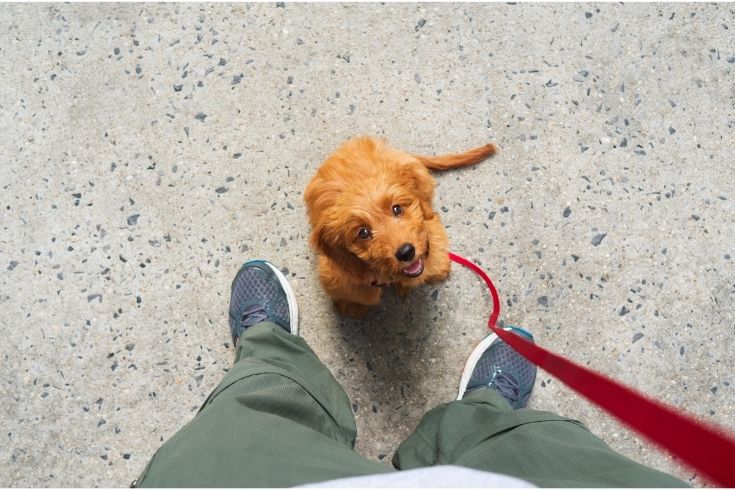
Advanced training can be a lot of fun for you and your dog and can also help improve your dog’s obedience skills. There are several different advanced training tricks you can teach your dog, including:
- Sitting pretty: This is a trick where your dog sits up on their hind legs with their front paws in the air.
- Spin: Teach your dog to spin around in a circle.
- Stay: This is a command that tells your dog to stay in place until released.
Advanced training can be a great way to improve the bond between you and your dog, and it can also help strengthen your obedience skills. If you’re interested in doing advanced training with your dog, be sure to start with basic obedience commands and work your way up gradually. Be patient and consistent, and you’ll see results in no time!
Start with Simple Commands
When you’re first starting out, it’s important to keep things simple. That means choosing commands that are easy for your dog to understand and obey to have successful behavior management. For example, “sit” is an excellent command for beginners because it’s something that all dogs know how to do instinctively.
On the other hand, “roll over” is a complicated command that requires your dog to physically move its body specifically. So unless you’re an experienced trainer, it’s best to avoid commands like that until your dog has mastered the basics.
Be Consistent with Your Commands
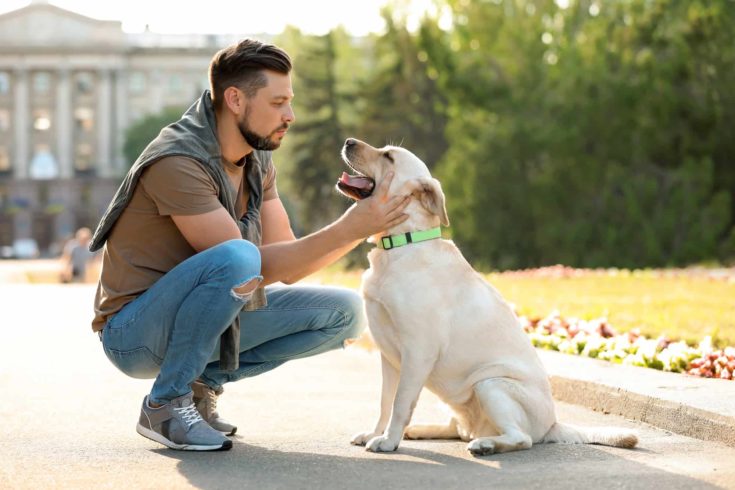
Once you’ve chosen your commands, it’s important to be consistent with them, and your training addresses problem behaviors. That means using the same word or phrase for each command every time you give it.
For example, if you want your dog to sit, always say “sit” – never use words like “please” or “good boy/girl.” This may seem like a minor detail, but consistency is crucial when training your dog. They need to know exactly what you want them to do in order to do it correctly.
Find the Right Training Method
You can use several different training methods to teach your pup the commands you’ve chosen. The most important thing is to find a method that works for both you and your dog – if they’re not responding well to a certain method, try something else. If they’re getting bored with simple tricks, try some advanced training. Some popular training methods include clicker training, treats/rewards-based training, potty pads/newspaper training, and obedience classes.
Practice Makes Perfect
Finally, remember that Rome wasn’t built in a day – it takes time and patience to train your dog successfully. Be sure to set aside some time each day (10-15 minutes is usually enough for their attention span) to work on obedience with them. And if they make a mistake or have an accident, don’t get frustrated – just keep at it, and they’ll get there eventually!
Do’s & Don’ts for Dog Training
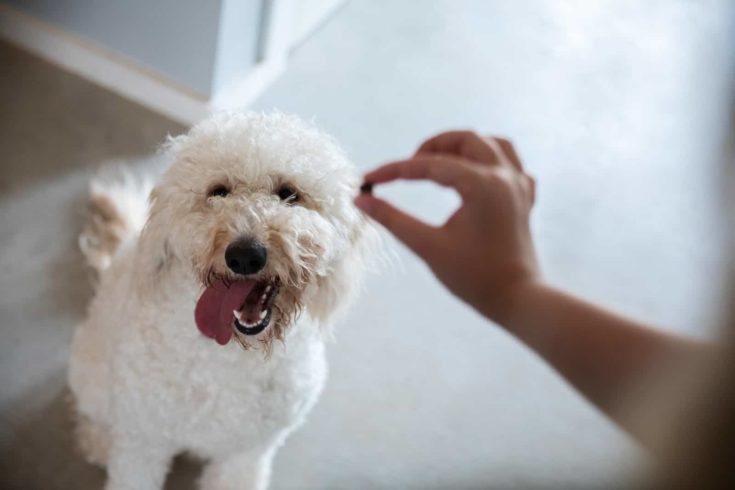
Here are some additional pointers to keep in mind as you train your pup:
- Do: reward good behavior – One of the best ways to train your dog is to reward them when they behave correctly. For example, if they sit when you tell them to sit, give them a treat or a pat on the head. This will show them they’re doing what you want them to and encourage them to keep doing it.
- Don’t: punish inappropriate behavior – Punishing your dog (by scolding them or hitting them) will only make them fear and resent you. It will not make them more likely to obey your commands. It will make things worse by making them less likely to trust or respect you.
- Do: be patient – Dogs learn at their own pace. Some dogs will pick up new commands quickly, while others will need more practice before they understand what you want from them. Either way, it’s important to be patient with your dog and never lose sight of how far they’ve come since day one.
- Don’t: give up – Training a new puppy or adult dog can be frustrating, but it’s important not to give up on yourself or your furry friend. If things aren’t going as planned, talk to a professional trainer or behaviorist who can help assess the situation and give you some advice on how to move forward.
It’s important to potty train your dog as soon as possible, and there are several ways you can go about it. Each method has its own set of pros and cons, so it’s important to find one that works best for you and your pup.
The most successful potty training methods involve using a combination of techniques – like crate training during the day and pads/newspapers at night.
With patience and perseverance, your dog will eventually learn where to go! Tell us about your experiences in dog training below! We look forward to hearing from you.
Our Articles on Dog Training

Crate Training Goldendoodles – Steps, Tips & Schedule
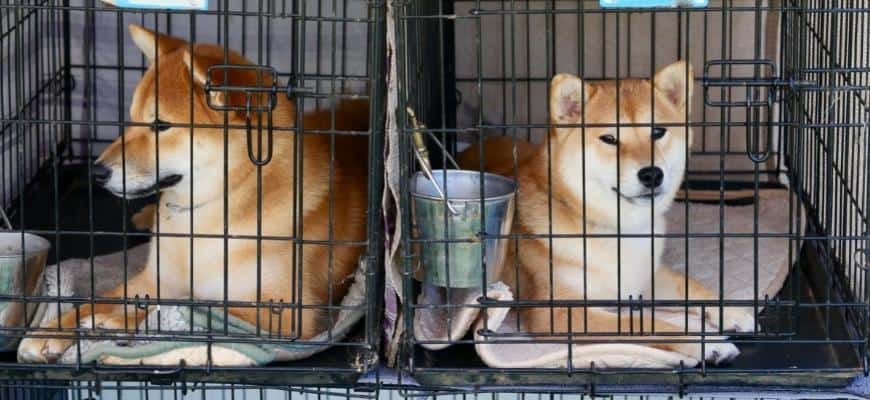
How To Crate Train Dog With Separation Anxiety
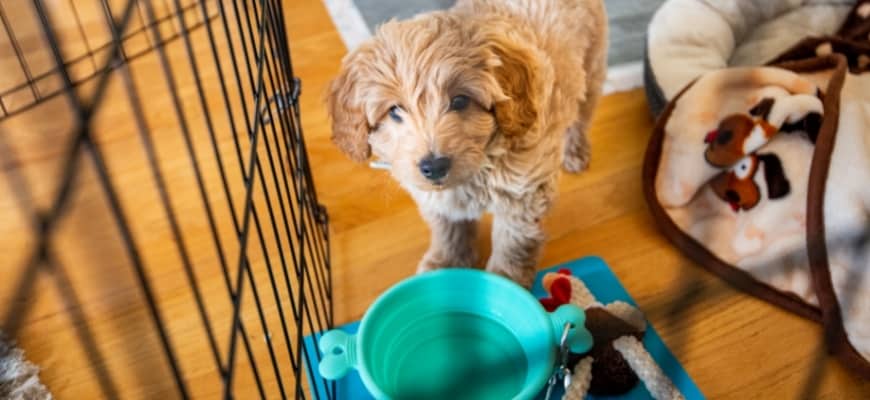
Goldendoodle Potty Training
